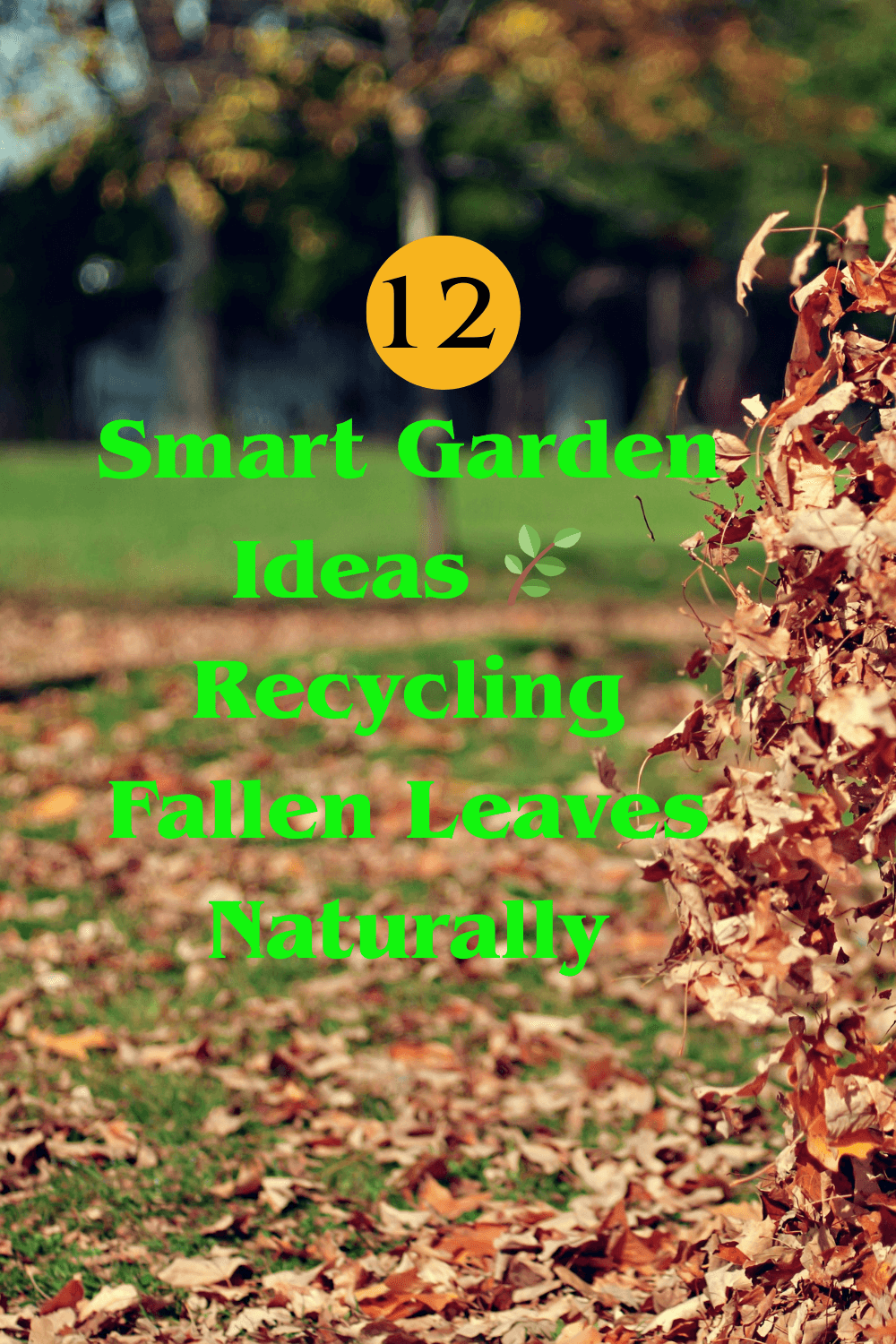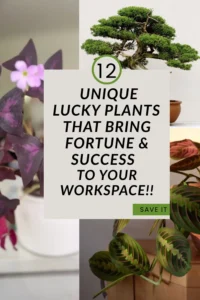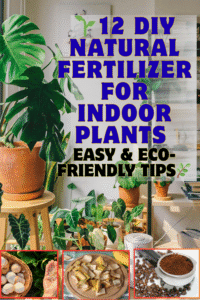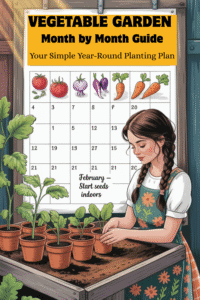Discover 12 clever garden ideas of recycling fallen leaves. From compost and mulch to insulation and wildlife habitats, learn how to recycle autumn leaves into soil-boosting, eco-friendly garden solutions.
When autumn arrives, many gardeners feel a mix of wonder and worry. The trees put on a beautiful golden show, but then suddenly your yard is blanketed with crunchy piles of leaves. Most people rake them up, bag them, and set them out for disposal—but what if you could turn that “mess” into one of the most valuable resources for your garden?
Fallen leaves are rich in carbon, minerals, and organic matter. Instead of sending them to a landfill, you can recycle them into mulch, compost, fertilizer, or even wildlife shelters. In fact, using leaves wisely can save you money, improve your soil, and make your garden more eco-friendly.
Here are 12 clever garden ideas of recycling fallen leaves that will help you transform yard waste into garden gold.
—
1. Make Leaf Mold for Soil Enrichment
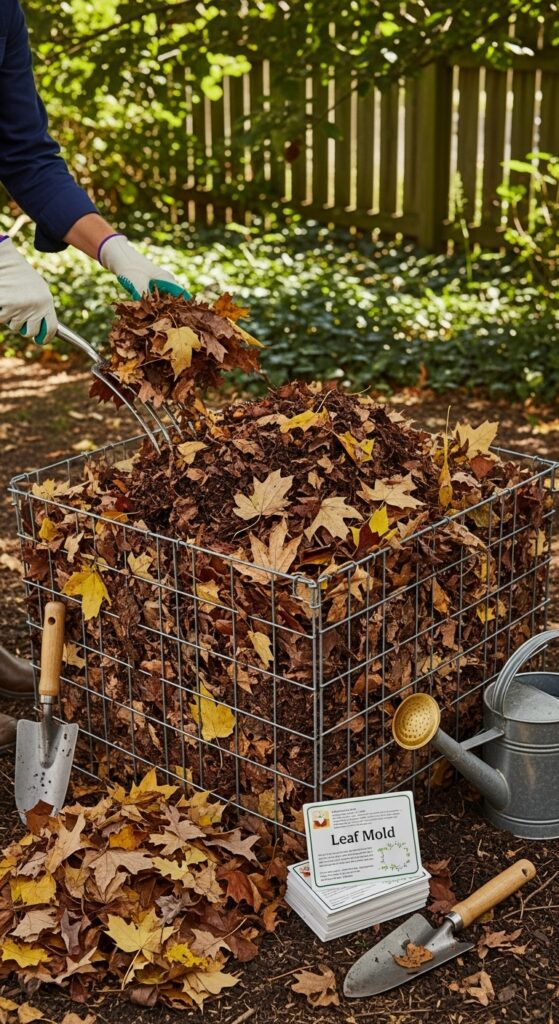
If there’s one use for leaves that every gardener should try, it’s making leaf mold. Leaf mold is simply decomposed leaves, but don’t underestimate its power. Once broken down, it becomes dark, crumbly, and earthy—perfect for improving your soil’s structure.
Why it works:
Leaf mold increases the soil’s ability to retain moisture and creates a healthy environment for beneficial fungi and microbes. Unlike compost, it’s low in nutrients but excellent at conditioning soil.
How to do it:
- Rake leaves into a pile or stuff them into a wire bin or compost bag.
- Moisten them lightly and keep them damp over time.
- Leave them for 6–12 months to break down naturally.
Once ready, you can dig it into garden beds or use it as a rich top-dressing.
—
2. Create a Nutrient-Rich Mulch
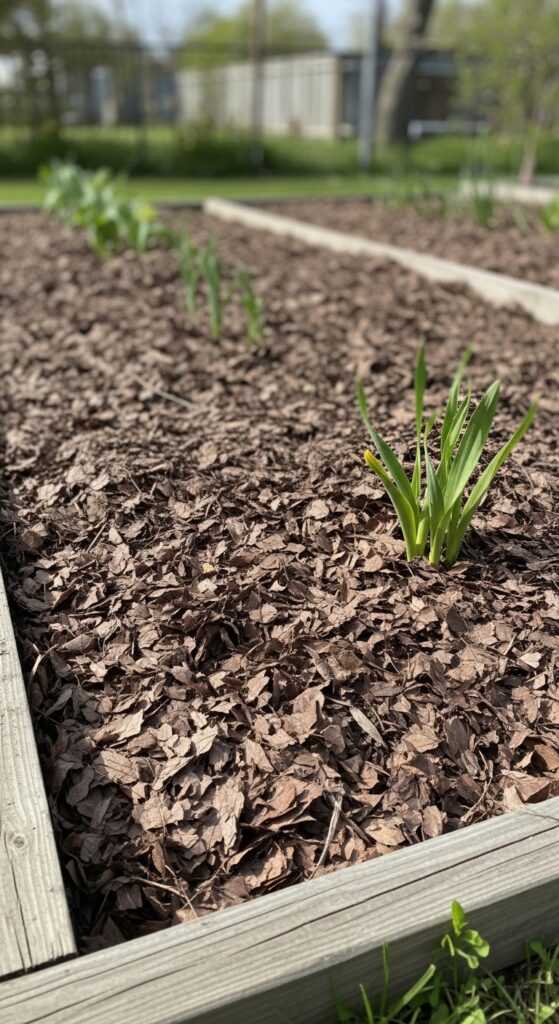
Shredded leaves make a fantastic mulch that rivals store-bought options. Mulching with fallen leaves not only saves money but also reduces waste.
Benefits of leaf mulch:
- Suppresses weeds
- Retains soil moisture
- Keeps soil temperatures stable
- Slowly adds organic matter back into the soil
Tip: Always shred leaves before mulching. Whole leaves can mat down, blocking water and air. A lawn mower with a bag attachment or a leaf shredder works perfectly. Spread a 2–3 inch layer around trees, shrubs, and vegetable beds.
—
3. Add to Your Compost Pile
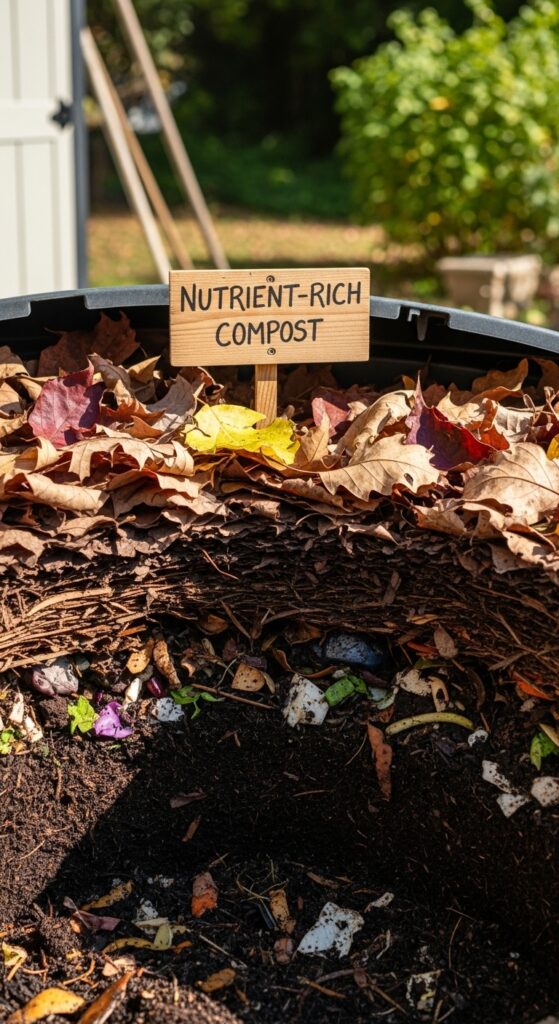
Leaves are a fantastic “brown” ingredient in compost. Since they’re high in carbon, they balance the nitrogen-rich “greens” like grass clippings and kitchen scraps.
How to use them:
- Alternate layers of leaves and greens in your compost bin.
- Keep the pile moist, like a wrung-out sponge.
- Turn it every few weeks to speed decomposition.
Shredded leaves break down faster, but even whole leaves will eventually become rich compost if you’re patient.
—
4. Build a Leaf Pile Habitat for Wildlife
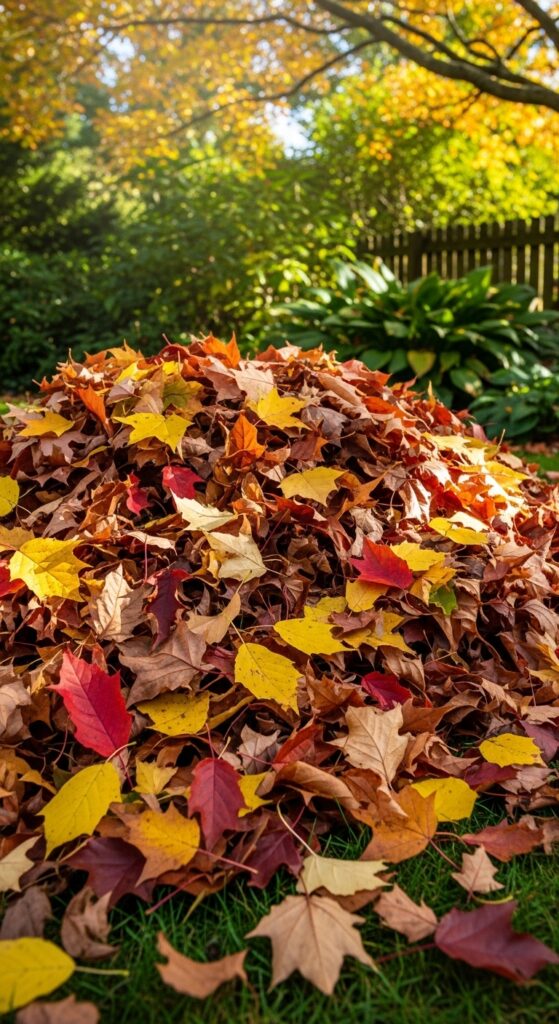
Not every pile of leaves has to be recycled into soil. Some should simply be left as habitat. Many creatures—including hedgehogs, toads, salamanders, and insects—rely on leaf piles for shelter during cold months.
Wildlife benefits:
- Butterflies and moths overwinter in leaf litter.
- Birds scratch through leaves to find insects.
- Small mammals use piles as cozy winter dens.
Choose a quiet corner of your yard, pile up leaves, and let nature do the rest. It’s one of the simplest ways to support biodiversity.
—
5. Insulate Tender Plants in Winter
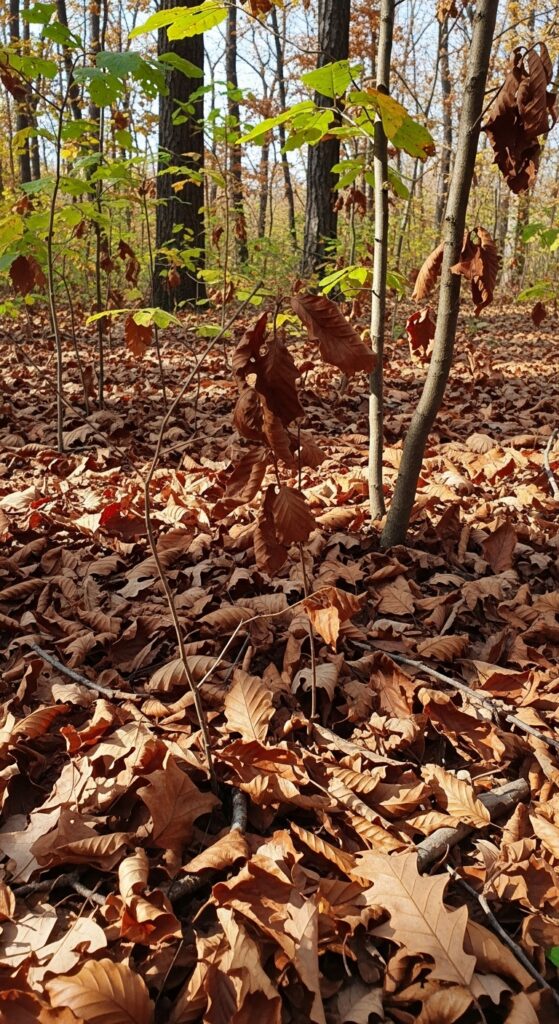
Fallen leaves are nature’s blanket. Packed around perennials, roses, or young trees, they act as insulation, keeping roots safe from freezing temperatures.
How to do it:
- Spread 6–12 inches of dry leaves around the base of plants.
- Create a protective mound around roses and sensitive perennials.
- For best results, cover the leaves with burlap or netting so they don’t blow away.
Come spring, simply rake away the leaf cover and add it to the compost.
—
6. Use in Lasagna Gardening
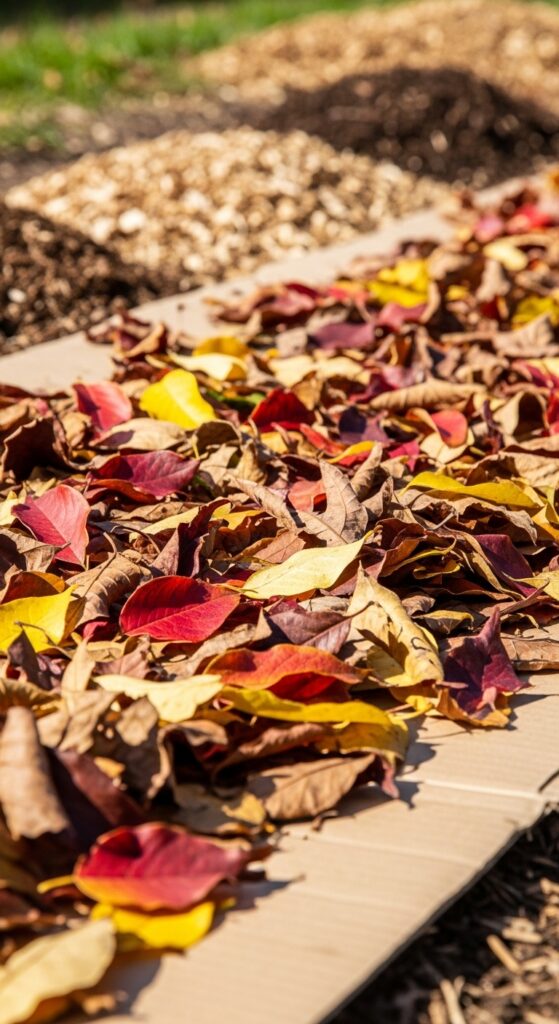
Lasagna gardening, also known as sheet mulching, layers organic materials to create new, fertile beds. Leaves are perfect for the “brown” carbon layers in this method.
Steps:
- Lay down cardboard or newspaper to smother weeds.
- Add a thick layer of leaves.
- Top with compost, grass clippings, or kitchen scraps.
- Repeat the layers until the bed is 1–2 feet high.
Over time, the layers break down into rich, friable soil, ready for planting.
—
7. Brew Leaf Tea Fertilizer
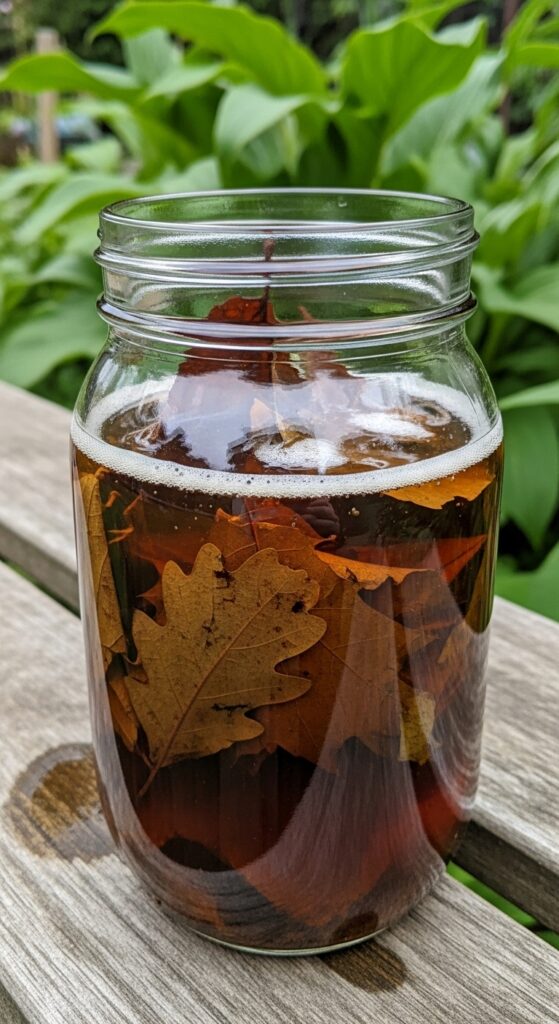
Just like herbs, leaves can be “steeped” to make a nutrient-rich liquid feed for your garden.
How to brew it:
- Fill a burlap sack or bucket with shredded leaves.
- Cover with water and let it steep for 1–2 weeks.
- Strain the liquid and use it to water your plants.
This DIY fertilizer provides trace minerals and organic compounds that boost plant health.
—
8. Line Garden Paths with Leaves
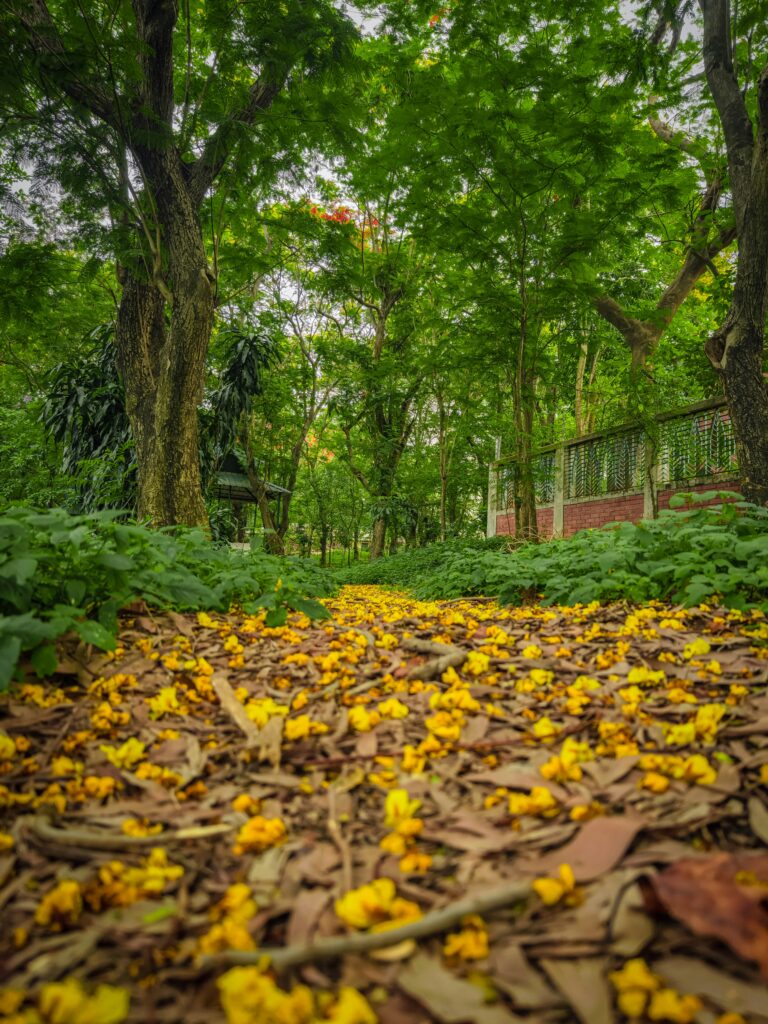
If you want a natural, rustic walkway, use leaves to line garden paths.
Advantages:
- Creates a soft walking surface
- Reduces mud in rainy weather
- Eventually decomposes into rich organic matter
Simply spread leaves thickly over pathways. As they compact and break down, add fresh layers. It’s functional, low-cost, and eco-friendly.
—
9. Protect Potted Plants
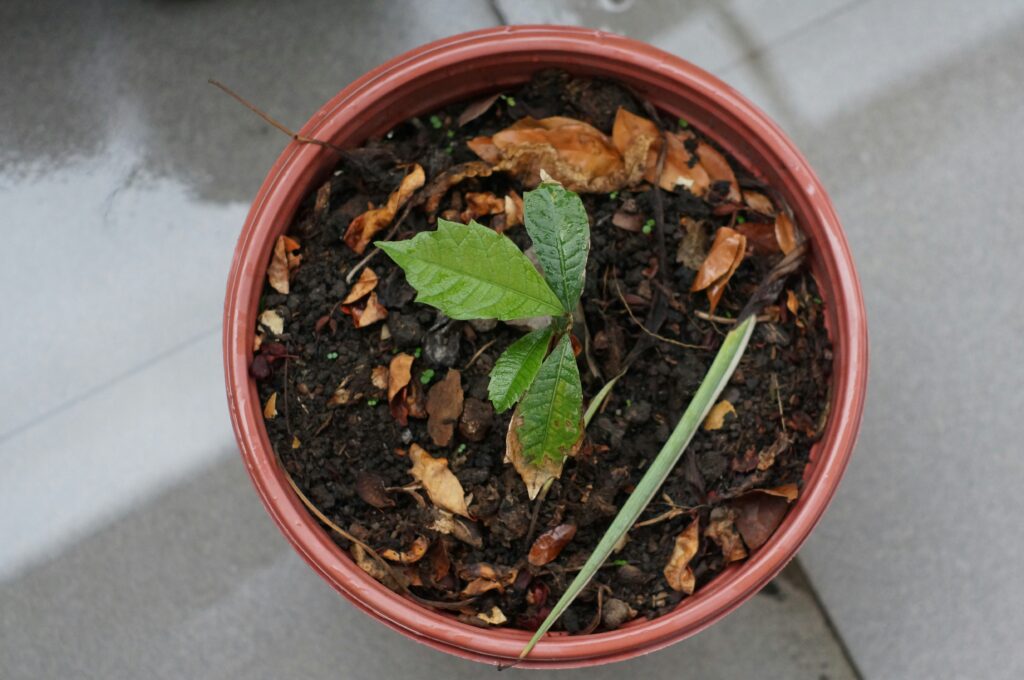
Container plants are more vulnerable to frost than those in the ground. Leaves can help insulate pots and protect roots.
How to do it:
- Cluster pots together against a wall for added protection.
- Pack leaves around and between pots.
- Cover the topsoil inside pots with shredded leaves.
This extra insulation helps tender roots survive chilly nights.
—
10. Start a Raised Bed Fill
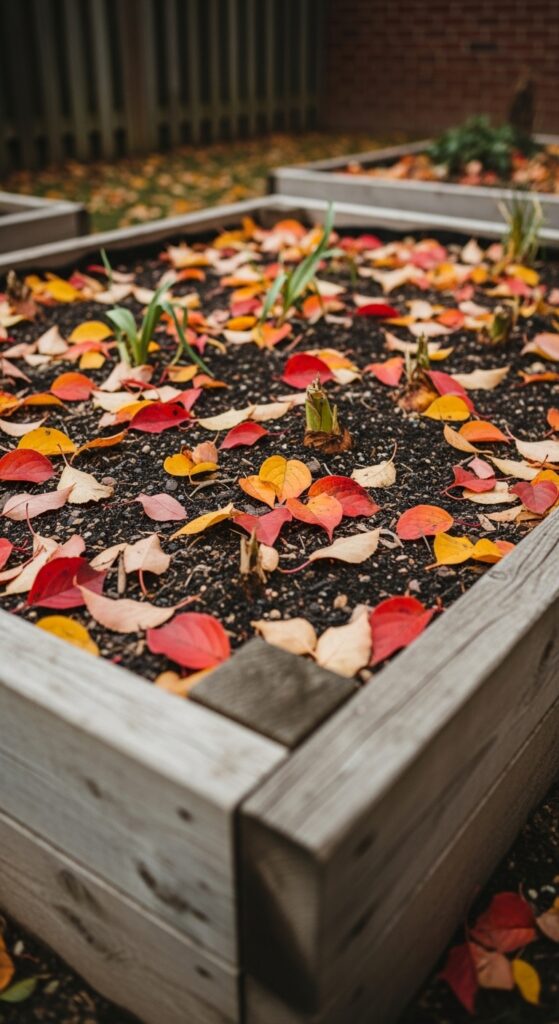
If you’re building a new raised bed, don’t waste money filling the bottom with expensive soil. Leaves are a perfect filler that will eventually enrich the bed.
Method:
- Fill the bottom third of the bed with leaves.
- Add layers of compost, straw, or other organic matter.
- Top with high-quality soil for planting.
Over time, the leaves break down, feeding the plants while improving drainage.
—
11. Make a Kid-Friendly Play Pile
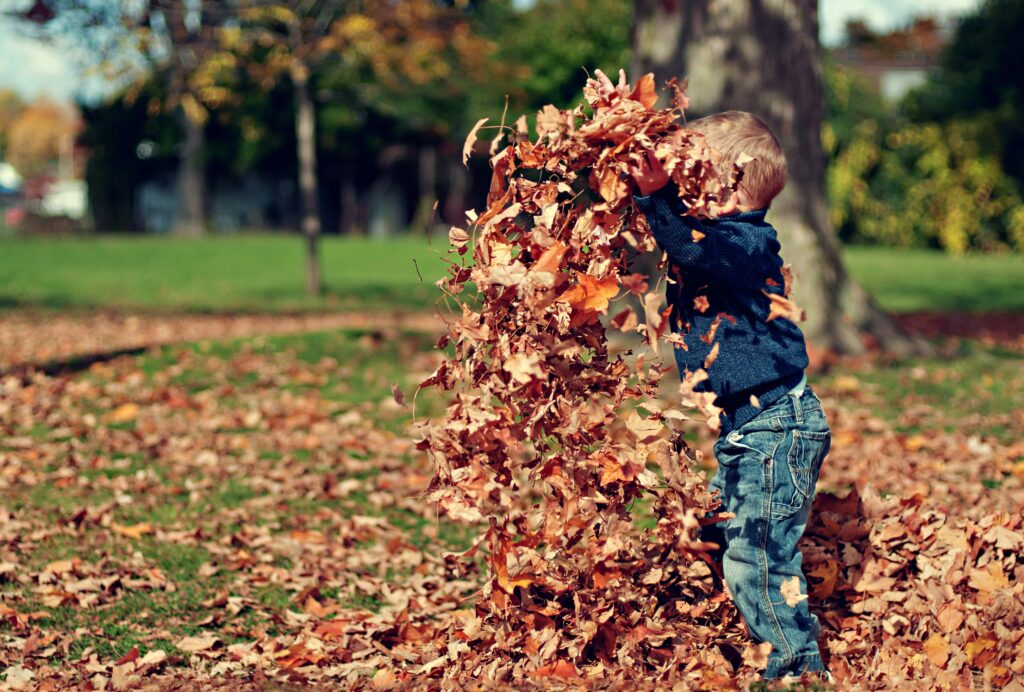
Leaves aren’t just useful—they’re fun! Rake them into a big pile and let kids (and pets) enjoy jumping in.
Bonus tip: After playtime, don’t waste the pile. Collect the leaves and use them for mulch, compost, or insulation. That way, you get double the benefit—joy first, soil enrichment second.
—
12. Save for Future Use
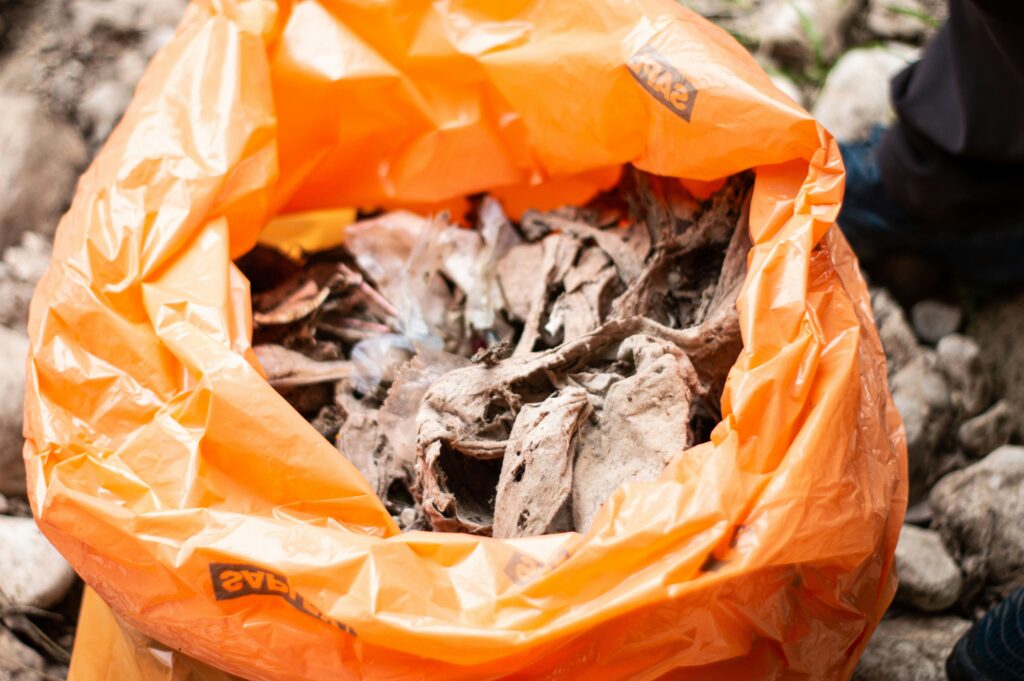
Sometimes you’ll have more leaves than you can use right away. Instead of discarding them, store them for later.
How to store leaves:
- Shred them first if possible.
- Bag them up in paper sacks or breathable containers.
- Store in a dry, shaded spot until needed.
You can pull them out anytime for mulch, composting, or insulation throughout the year.
—
Final Thoughts: Turn Autumn Leaves Into Garden Gold
Every fall, millions of bags of leaves get sent to landfills. But to gardeners, those same leaves are a free resource packed with potential. They can enrich soil, protect plants, feed compost, and even provide shelter for wildlife.
By trying these Garden Ideas for Recycling Fallen Leaves you’ll not only improve your garden but also cut waste and give back to nature.
So next time you hear the rustle of leaves underfoot, don’t think of them as a chore. Think of them as garden gold waiting to be used.

